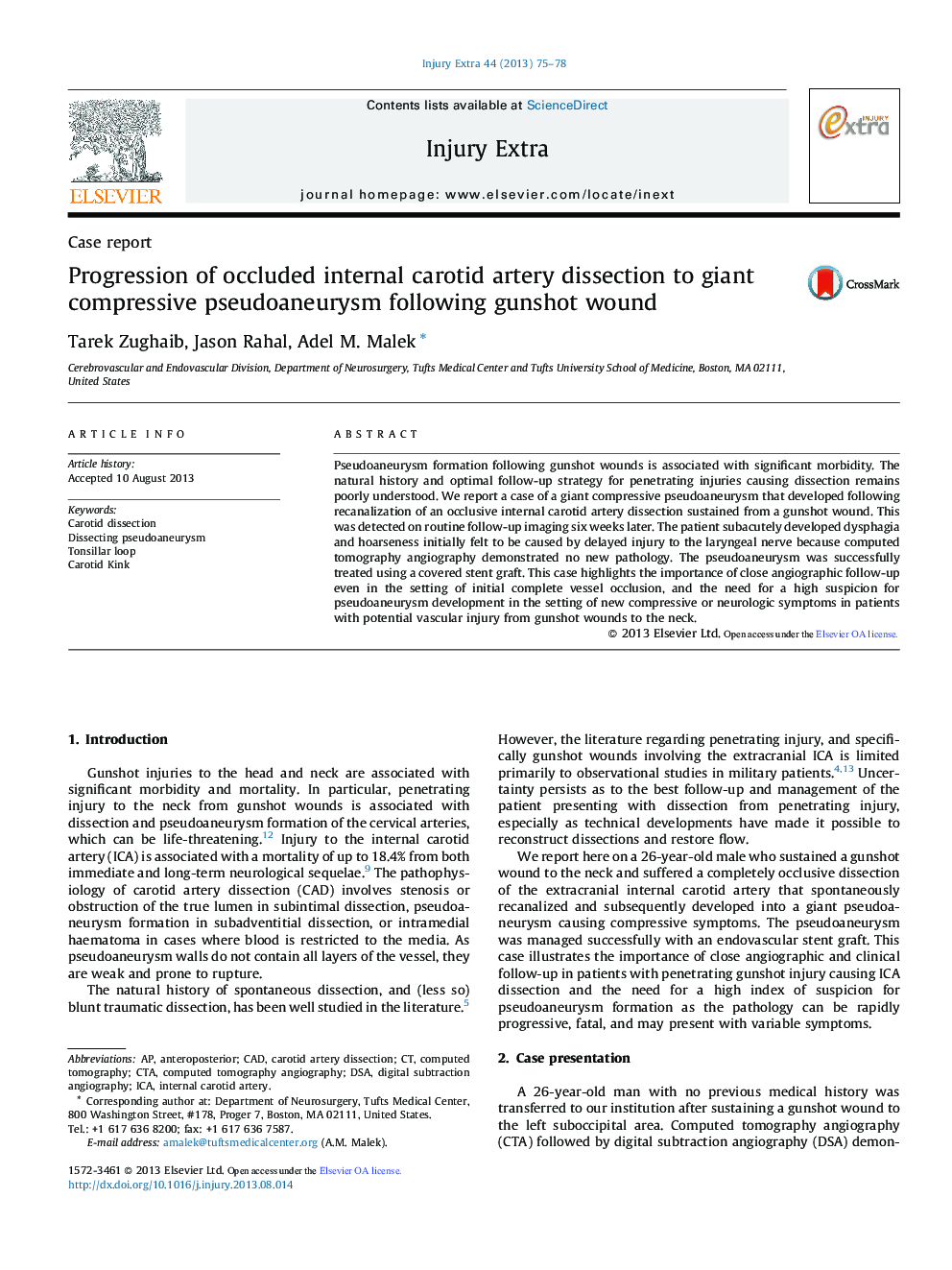| Article ID | Journal | Published Year | Pages | File Type |
|---|---|---|---|---|
| 3243480 | Injury Extra | 2013 | 4 Pages |
Pseudoaneurysm formation following gunshot wounds is associated with significant morbidity. The natural history and optimal follow-up strategy for penetrating injuries causing dissection remains poorly understood. We report a case of a giant compressive pseudoaneurysm that developed following recanalization of an occlusive internal carotid artery dissection sustained from a gunshot wound. This was detected on routine follow-up imaging six weeks later. The patient subacutely developed dysphagia and hoarseness initially felt to be caused by delayed injury to the laryngeal nerve because computed tomography angiography demonstrated no new pathology. The pseudoaneurysm was successfully treated using a covered stent graft. This case highlights the importance of close angiographic follow-up even in the setting of initial complete vessel occlusion, and the need for a high suspicion for pseudoaneurysm development in the setting of new compressive or neurologic symptoms in patients with potential vascular injury from gunshot wounds to the neck.
